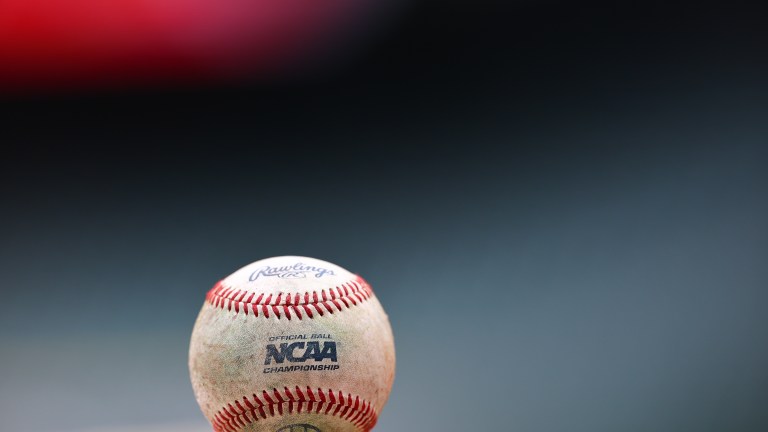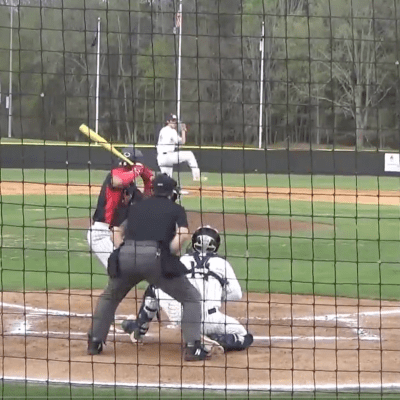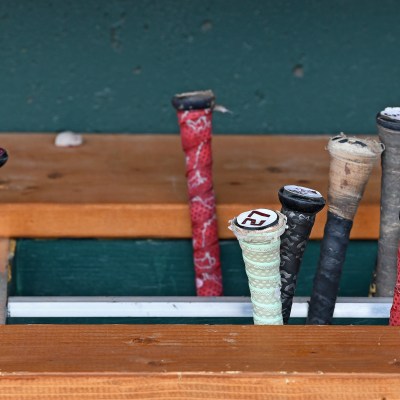Iowa’s Cade Obermueller Looks Like a Completely New Arm
Obermueller has seen his draft stock skyrocket in 2025.

Over the years, we’ve seen our fair share of prep risers come and go. Tyler Bell was the prominent name a year ago, James Ellwanger the year prior, and numerous others have found their way on campus after making waves in the spring.
Cade Obermueller was one of those guys, as he sparked interest amongst scouts in the spring of 2022 with an uptick in velocity and a dynamic breaking ball. He was, and still is, every bit of a “metric darling.” His low-launch release, projection, and significant spin rates created helium, but at the end of the draft, Obermueller found himself staying home and heading to Iowa.
Obermueller profiled as a draft-eligible sophomore, and while there were glimpses of what he could be, the strikes were never there.
Texas selected him in the 19th round of the 2024 draft, but Obermueller opted to return to college. While it’s always a gamble, it has paid off greatly for the southpaw, as he’s struck out 76 batters in 53.2 innings to the tune of a 2.18 ERA. The most important aspect of this? The strikes have shown up.
The strikes are not the only thing that has appeared in 2025. He looks like a completely new pitcher.
We’ll start with the arsenal itself, as there have been some usage changes and velocity jumps to note.
For starters, here’s a look at what Obermueller’s arsenal and velocity looked like in 2024:
- Fastball: 90.67 MPH AVG, 59% usage, 60% strikes, 21% whiff, 23% chase
- Slider: 79.6 MPH AVG, 33% usage, 54% strikes, 34% whiff, 17% chase
- Change: 81.6 MPH AVG, 8% usage, 44% strikes, 39% whiff, 24% chase
In 2025, here are the changes across the board:
- Fastball: 92.5 MPH AVG, 55% usage, 68% strikes, 30% whiff, 32% chase
- Slider: 80.8 MPH AVG, 43% usage, 64% strikes, 38% whiff, 28% chase
- Change: 85.8 MPH AVG, 2% usage, 42% strikes, 50% whiff, 27% chase
There’s a noteworthy trend in terms of him becoming more of a two-pitch guy, but getting more usage out of his sweeper has paid dividends.
The pitch is a disgusting offering from the low slot Obermueller possesses, averaging just under twenty inches of sweep with an average spin rate over 2,800 RPM. It’s every bit of an above-average to plus pitch.
The jump in fastball velocity is another noteworthy development, though the success is more than just that. With Obermueller’s arm slot increasing slightly, he’s added some extension to his delivery, as he’s averaged nearly seven feet in 2025. In 2024, his extension averaged close to 6.4 feet. It’s a significant jump.
This, of course, is just one piece of the puzzle. The refinement in mechanics has allowed Obermueller to find a more consistent release point, which helps the uptick in strikes and chase from opposing hitters. He’s maintained the fastball shape as well, generating decent carry from his slot with tons of running life.
There are two distinct fastballs, a sinker and a four-seam, that he mixes in, though the four-seam heater features an extremely flat approach angle on the top rail, which aids the whiff rate overall. Finding success with the heater was paramount, and he’s done just that.
The biggest development overall is the strikes. Over his first two years at Iowa, Obermueller struggled mightily to find the zone, recording a 56% strike rate across nearly 1,400 pitches.
In 2025, that rate has climbed significantly, jumping up to 66%. Time will tell if he can hold this trend, but the refinement to his mechanics (i.e., smoother movement, better extension, less fall-off post-release) is a key development, and it’s a result of adding more weight to his frame. As a sophomore, Obermueller was listed as 150 pounds, whereas he’s been listed at 170 pounds in 2025.
Overall, Obermueller has seen his stock skyrocket as a result of these positive trends, and he’s placed himself firmly into first-day considerations this summer.
Obermueller has not allowed an earned run in four straight starts, and he’s struck out 33 batters in 26 total innings. It’s been pure dominance from the undersized southpaw, and while he may wind up as a reliever at the next level, his newfound success gives him life as a starter in the minor leagues.


